This collection presents an arc of historical experience of Jewish child and teen life during the Shoah. Across Central and Eastern Europe, the young and hunted in these stories hide in forests; survive in ghettoes and camps; assume new identities under the protection of Righteous Among the Nations. With the exception of two historical fiction narratives, the stories were reconstructed from the oral testimonies of child and teen survivors, many of whom settled in Toronto. As a daughter of two child survivors, Carol Lipszyc has also included stories of her parents, natives of Belarus and Lublin, Poland. The stories in this collection depict children as creative, resilient, aged-before their time, as they adapt to their unconscionable reality. The historical experience in this collection provides a wide spectrum of what a race of children endured; the few that attested to that experience in this collection lend voice, detail and insight to a massive, unfathomable crime.
There has been extensive material published on the Shoah over the past decades. Soon, as fewer survivors remain, writers will steer more and more towards narrative that has been reconstructed from the historical, archival material available. Because Lipszyc is a daughter of survivors, she brings a particular sensitivity to the subject. In stories such as “The Eldest of the Jews”; “Merchants of Mercy”; “Journey of a Coin”, the reader meets children who must somehow assimilate state-sponsored and organized genocide, and adapt to that death culture on a day-by-day basis in the hopes of possibly surviving. In some instances, the children use their imaginations to survive day-byday and assimilate that reality. Children, like the child protagonist in “Feather Boy,” also behave in a dissociative way when grappling with trauma. Overall, the children and adolescents captured in these stories are given agency in this collection.
“Carol Lipszyc’s stories are both moving and historically accurate. Her documentary style provides a sense of what life was like for young persons not only during the catastrophe, but in the months before and after. Readers should not expect stereotypical Shoah-tales. Complexities abound. I was particularly struck by the final tale, “A Jewish Interrogation,” in which a young survivor who has passed herself off as a Pole, is interrogated after the war by fellow Jews and made to prove her Jewishness. This is indicative of the uncanny way in which several of Lipszyc’s stories explore Jewish identity.”
—Kenneth Sherman, author of What the Furies Bring, winner of the Canadian Jewish Book Award.
“Carol Lipszyc’s book takes us into the world of Jewish child victims of the Holocaust before they became survivors. Her sensitive literary style then makes us companions to the experiences of those Jewish children in the Holocaust. Lipszyc’s literary genre is a valuable addition to child survivor testimonies and autobiographies.”
—Paul Valent, child survivor of the Holocaust, traumatologist, writer, author of Child Survivors of the Holocaust

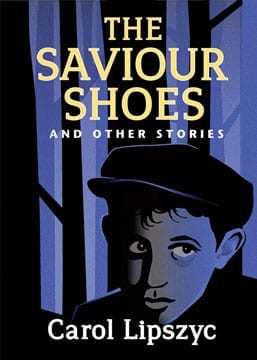
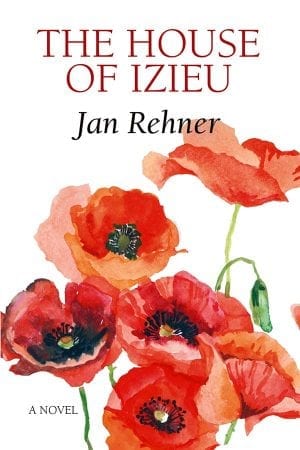
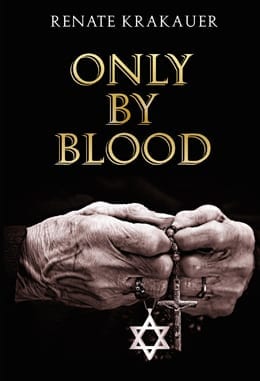
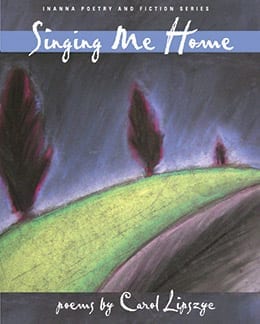
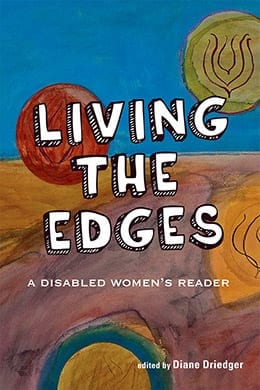

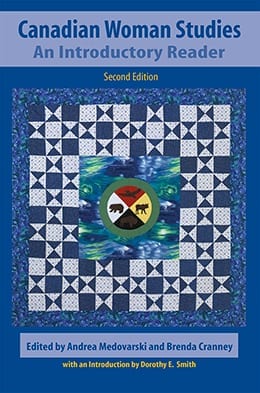
InannaWebmaster –
The Saviour Shoes and Other Stories by Carol Lipszyc
reviewed by Marcia Weiss Posner
Jewish Book Council – June 26, 2016
http://www.jewishbookcouncil.org/book/the-saviour-shoes-and-other-stories
There are many books based on experiences of Jewish children and adolescents during the Holocaust, biographical and fictional, and, like this book, some are an amalgamation of both, but this one is particularly fine. Lipszyc can take a story gained through a retelling or an interview, then pace it and reframe it so that prose becomes poetry in her writing, sometimes leaving the reader breathless. Even deadly reality becomes slightly mystical and is made graceful by her telling. Through the forests, in the ghettos, within the devastation and horror, how does she find a sort of poetry? From The Singers on Grodzka Street: “At the end of the tunnel, in the open, near the pots of burning coals, stood bagel peddlers eager to sell their hot rings of bread sprinkled with poppy seed or salt . . . .beggars who arrived at the scene chanting their pleas for groschen in an unending chain of lament.” In Merchants of Mercy, even while talking about the trials of begging in the ghetto, the children who have been subject to the police, to bullies, to the division of food after each one has begged, to the loss of a companion who has been shot, remind her of a discarded picture that resembles their threesome, as they were before. She picks it up and digs at the burial site, burying the picture there; a memorial. The mother’s tragedy in the Death Watcher is unforgettable, as is the peace and hope for the future, in Verses for My Priest. These stories do not dwell in one country or in one type of locale; this book defies such characterizations. The tales are valid, but seldom literal. They roam the ghettos, the camps and the forest. Beautifully told heartbreaking short stories that are totally compelling, they are taken from a variety of situations and locales.
InannaWebmaster –
Review of Carol Lipszyc’s The Saviour Shoes and Other Stories
reviewed by Paul D. Green – Per Contra – June 18, 2016
http://percontra.net/category/book-review/
Why, one might ask, is there a need for yet another book on the Holocaust? That’s a fair question. Here are two valid responses. (I’m sure the interested reader can come up with many more.) First of all, many of the remaining Holocaust survivors are in their eighties or nineties, and there is a serious need for valid texts to tell and retell the stories of those who suffered such unimaginable horrors—especially since they will no doubt be gone soon.
Second, it is well known that Holocaust denial has been on the increase for the last few years, and it is important to refute the cruel and insensitive lies of those who claim that the atrocities of the Holocaust, including the murder of 6,000,000 Jews and 5,000,000 others, have been greatly exaggerated or are mere fabrications.
The book under review, The Saviour Shoes and Other Stories by Carol Lipszyc, a collection of stories about the Holocaust, is a fine piece of literature and, like most good literature, has its own inherent value. It not only fulfills the double function mentioned above of keeping alive the stories of survivors and reminding us of the brutality in Nazi-controlled Europe, but its memorable characters, gripping events, and simple but often beautiful language have a major impact on the reader.
The major protagonists are child survivors, including adolescents, and as the author notes, many of the stories are based on real-life incidents, including some that are influenced by occurrences to her own parents. (Lipszyc is the daughter of two child survivors.) Thus a number of the stories are inextricable combinations of history and fiction.
Through the perspective of children and young adults we experience life under the Nazis. Not surprisingly, many of the children are separated from their parents, some through parental death (primarily by means of starvation, disease, or executions by sadistic storm troopers) or the unexpected appearance of Righteous Gentiles asked by desperate Jewish parents to become, at the risk to their lives, surrogate parentsto unsuspecting children. In one of the stories, “City of Dreams,” two brothers, Ernest, the older, and Peter, the younger, become part of a kindertransport from Vienna, by which trainloads of children travel to Holland and then, by boat, to England to be adopted by English couples. The two boys realize they will probably never see their parents again.
This collection of enlightening stories makes us aware that even in the most traumatic circumstances children like to play games. In their play-acting they often make fun of political leaders, as they do in one of these stories. In “City of Dreams,” after the children have arrived in England, “some of the older boys…caricature Hitler, the way he thrusts his chest forward when he rails at the world and wheels his arm up and down like a mad crosswalk guard.” And when they get tired of mocking Hitler, they “move to Goebbel’s bad leg.”
There is a somewhat different mood in “The Elder of the Jews,” which takes place in the Lodz Ghetto, with boys on the street playing at being soldiers. Then one of the older boys, 13-year-old Lipa,offers to “play the part of Chaim Rumkowski, Chairman and head of the Lodz Ghetto” (who is the “Elder of the Jews” in the title of the story). Lipa plays his part so well that, in a fascinating instance of child psychology, the game turns real for the other boys, and they begin urging Lipa for more food and medications for family members. The scene is a reminder of the less-than-ideal conditions in the ghetto. The illusion created by Lipa is dispelled only when a woman shouts at the boys from her window, reminding them about violations of curfew, and suddenly other parents show up in the street to get their sons to go home.
Righteous Gentiles function in these stories, as they did in real life, not only as adoptive parents but also as unofficial child protectors. In the title story, “The Saviour Shoes,” an unnamed homeless boy, who lost his mother and younger sister in a massacre at the ghetto of Mir Radziwill Castle (his father had died probably from tuberculosis or some other lung disease), seeks help from a Polish farmer.
The farmer, who has a wife and three daughters, initially tells him, “I cannot open my home to you,” but overcome by a “curious and disquieting compassion, a flutter of the heart, like a bird’s wing on the eaves of his shed,” he changes his mind, helps the boy builda protective bunker, “inserting a metal pipe in the dirt for the boy to breathe through” in bad weather, allows him to use his shed in warmer weather, and “once every few weeks…left him cooked potatoes, cabbage or carrots in the pig stalls.”He also warns him when German soldiers are about to conduct “an imminent manhunt in the forest.” Without the farmer’s assistance, the boy would almost certainly not have survived.
Another example of the benevolent influence of a Righteous Gentile is “Homage to an Ordinary Man,” where 16-year-old Yitzchak is one of “300 young men from the Polish town of Staszow” ordered to the work camp at Skarzysko-Kamienna. Not long after arriving, Yitzchak volunteers for a work detail requiring twelve young men to “handle highly explosive material.”The meister, or head of the work detail, Weisleder, has an undeserved reputationas a “cruel beast” who will surely “kill them” [i.e., his workers] within the week,” but instead turns out to be a compassionate man, which Yitzchak and some of the others recognize from the kindly way he looks at them. He provides them with real soup—“not the sweet watery soup [i.e., the kind served to other Jewish prisoners], but the soup with carrots, onions, potatoes, turnips.”
Weisleder’s ultimate act of salvation is to hide his twelve men during the process of liquidating the camp:
While approximately forty percent of the prisoners were being shot, he ushered the twelve into an ammunition factory. … There on the oil-stained floors, Weisleder slept with his disciples[emphasis mine] and brought them food.
Eventually Yitzchak survives even a journey to Buchenwald concentration camp, and he survives the war itself, but without the protection of this Righteous Gentile survival would have been unlikely. The good-hearted Weisleder seems to me to be a version of Oscar Schindler, the German industrialist who saves more than a thousand Jewish prisoners from extermination. Weisleder saves only twelve, but 12 is a highly symbolic number. (There is a fair amount of symbolism all throughout these tales.) The number 12 may perhaps refer to the twelve tribes of ancient Israel and/or to Christ and his 12 disciples. (See above reference to Weisleder sleeping with his “disciples.”)
In some ways the most unusual tales in Lipszyc’s collection are“A Question of Gender” and “A Jewish Interrogation.” Both stories are about attempts to conceal the respective child-protagonists’ identities. In the first case a little boy, Reuben Feldstein, is taken in by another Righteous Gentile, Stanislawa Pacek, who protects her charge by insisting he dress as a little girl. The gender change is to ensure protection against an inspection of his genitals; the Nazis were able to pinpoint Jews from non-Jews by checking for circumcision. Thus little Rubinko (Stanislawa’s designation for the little boy) becomes Janka, a little girl, and in the process undergoes not merely a gender change but also a religious “conversion.” (Stanislawa takes him, dressed as a girl, to the church to which she belongs.) Their separation after several years is painful for both; they are so close that he refers to her as “Mamusia”(‘Mother’). When his aunt, the only relative to survive the war, comes for him, she tells Stanislawa that she intends to take her nephew to Palestine.
In “A Jewish Interrogation” a 16-year-old girl who has posed as a Christian during the war must come to terms with her Jewish faith and prove to a group of religious Jews on a train that she is Jewish. The problem is that during the war a German boy calls her and her aunt Polish pigs, and she angrily responds in Yiddish that she will “punch his teeth out.” The realization that she has put herself and her aunt in danger by speaking Yiddish creates in her a form of partial amnesia: “That evening and for the rest of the war, I could not retrieve a spoken word of Yiddish.” Consequently, she cannot respond in Yiddish (only in Polish) to her Jewish interrogators. Even though she can answer their questions about Passover and other Jewish holidays, they nonetheless doubt that she is truly Jewish. Like the aunt of Rubinko/Janka, she dreams of “embarking on a boat to Palestine” to renew her Jewish faith.
A brief review such as this one cannot do justice to the complexity of themes, characterization, tone, and imagery and other stylistic devices of this extraordinary collection, not to mention the high-powered emotional impact the stories have on the reader. For example, consider this poignant passage on homeless children in the infamous Warsaw Ghetto for its power:
In the dark, against the curfew, the voices of abandoned children drifted up like smoke and charred the windows as they moaned for alms, for bread, for a place to sleep. The morning found them ready for burial, frozen on streets or on the steps of dilapidated houses, without shoes, in ragged clothes.(“The Deathwatcher”)
Anyone interested in the subject of the Holocaust should purchase a copy of this wonderful book as soon as possible.
InannaWebmaster –
Lipszyc, Carol. The Saviour Shoes and Other Stories
Association of Jewish Libraries Reviews – Vol. V. No. 3, September/October 2015
http://jewishlibraries.org/index.php
This book is a moving and powerful collection of stories of Jewish children and teens who survived the Holocaust in a variety of ways. The stories provide a historically accurate sense of what life was like before, during and after the Shoah. Most are based on oral history testimonies. The author, daughter of two child survivors, has included her own parents’ stories in the collection. She has published poetry and short stories in Canadian and American journals, as well as online, and she is currently an Associate Professor teaching English education and writing at the State University of New York, Plattsburgh. The book reads well; it provides a fascinating glimpse into the experience of the Holocaust from the point of view of children and teens, and it is a valuable addition to the literature of testimonies and memoirs of child survivors. The Saviour Shoes has broad appeal, and will be an important addition to Temple and synagogue libraries, as well as high schools, colleges, universities, and public libraries.
—Susan Freiband, Retired Librarian and Library Educator; Volunteer Temple librarian